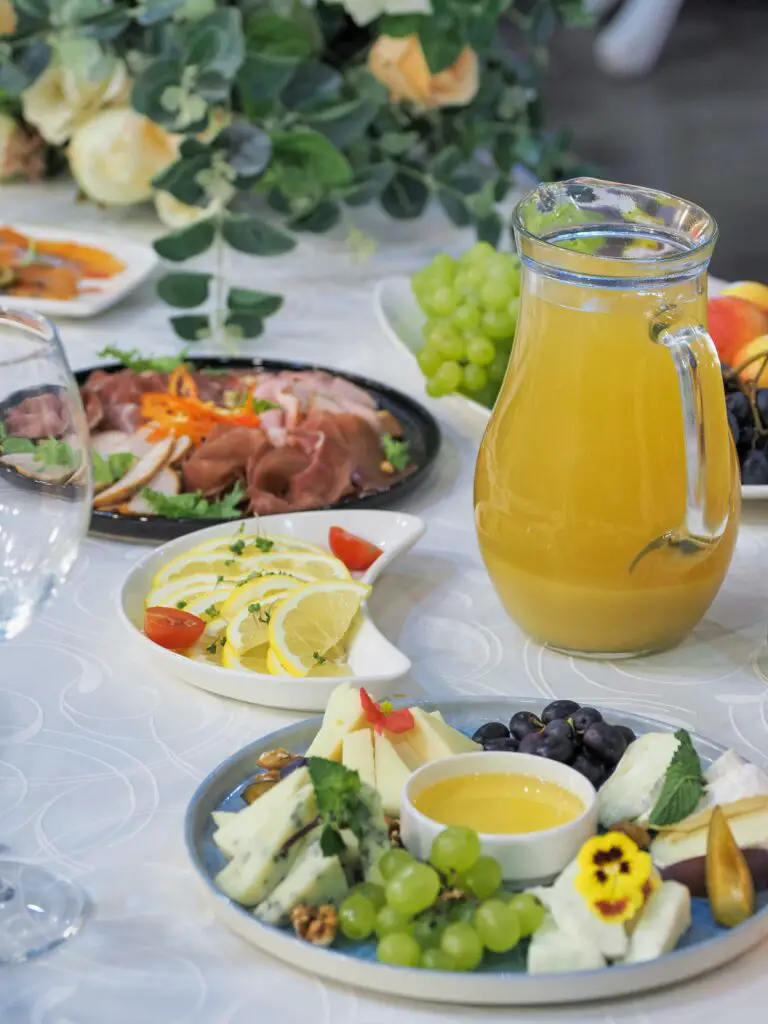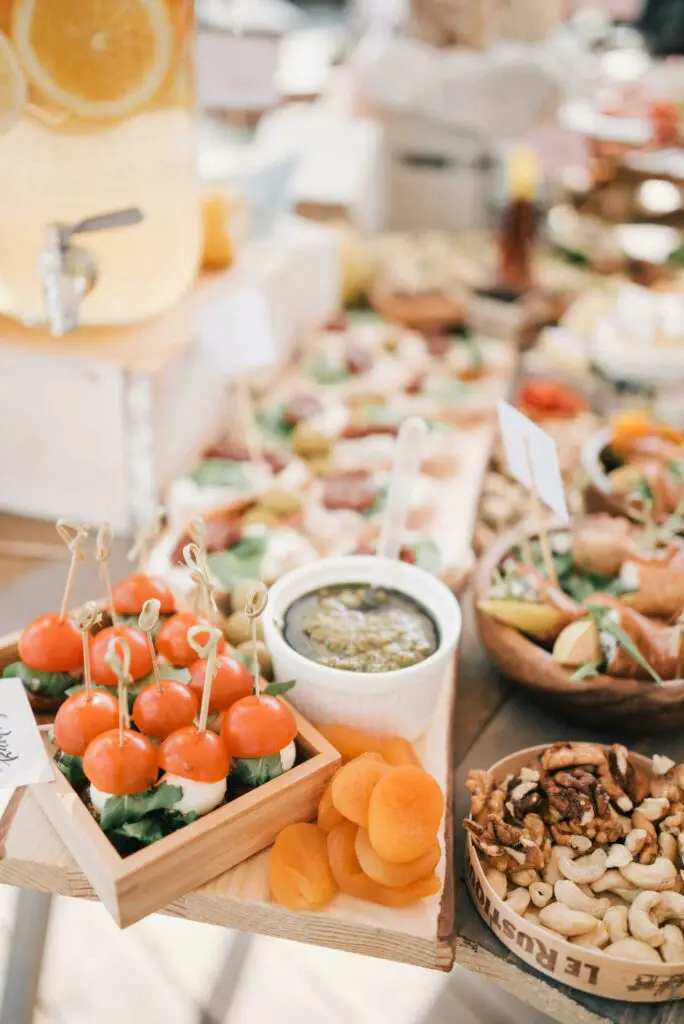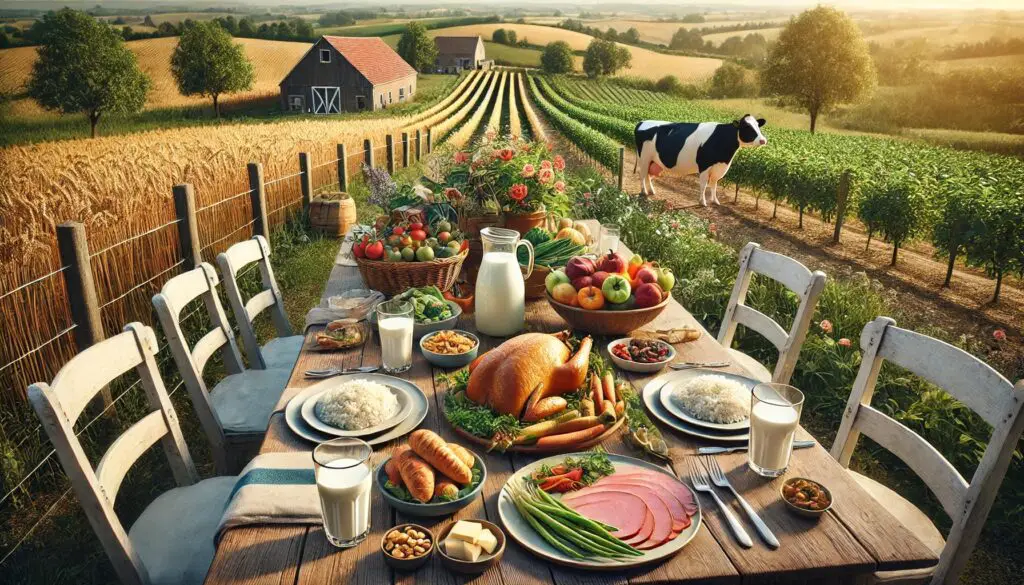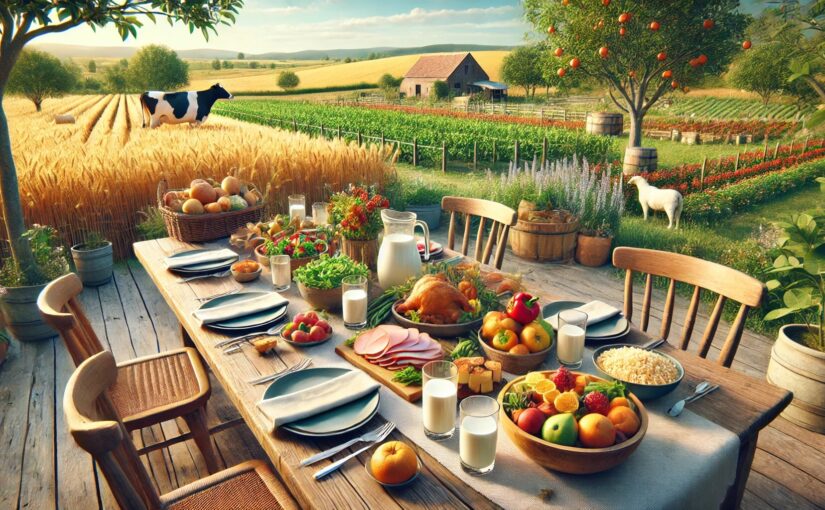Did you know that every meal you enjoy has a hidden real estate footprint? It’s not just about the farm-to-table journey or the grocery store aisles. It’s about the actual land needed to produce every ingredient on your plate. Let’s embark on a delicious journey to uncover how much land feeds a family of four in a single day.
Breakfast: A Morning on the Fields
Picture this: You pour cereal into your bowl, splash in some milk, and grab a fresh apple. Seems simple, right? But behind that humble breakfast lies a sprawling tapestry of fields and farms.
- Cereal (200g for the family): It takes about 0.26 square meters of wheat fields to produce.
- Milk (800ml): Dairy cows need space too. About 0.8 square meters of pasture goes into that creamy goodness.
- Fruits (4 apples): Orchards spread out over 0.6 square meters to grow those crisp treats.
So, your family’s breakfast nibbles away at roughly 1.66 square meters of land. That’s like the size of a small kitchen table!

Lunch: Sandwiches Across the Acres
Lunchtime rolls around, and sandwiches are on the menu. Let’s layer up the land use.
- Bread (16 slices): The wheat for your bread uses about 0.62 square meters.
- Cheese (240g): Producing cheese taps into 2.04 square meters of dairy land.
- Ham (400g): Pork production takes up 3.56 square meters.
- Lettuce and Tomato (400g): These veggies are lightweight on land, using just 0.08 square meters.
Your midday meal stacks up to approximately 6.3 square meters. That’s about the size of a small bedroom!
Dinner: Fields Feast at Sunset
Dinner is where the land use really sizzles, especially if meat is involved.
- Chicken (600g): Poultry farming requires around 4.26 square meters.
- Rice (300g): Those rice paddies cover about 0.75 square meters.
- Vegetables (800g): Mixed veggies add another 0.16 square meters to the tally.
Dinner devours about 5.17 square meters of land. Picture a parking space filled with delicious food.
Snacks and Sips: The Nibbles Add Up
- Nuts (120g): Nut trees are land-hungry, needing 0.95 square meters.
- Cooking Oil (90ml): Oil crops use about 0.33 square meters.
- Wine (300ml): Vineyards contribute 0.36 square meters to your daily land diet.
These extras munch through 1.64 square meters. Even the little things make a big difference!
Totaling Up the Land Buffet
Adding breakfast, lunch, dinner, and snacks, your family’s daily meals consume approximately 14.77 square meters of land. But wait, there’s a twist!
The Beef Factor
If you swap out chicken for beef in your dinner, land use skyrockets.
- Beef (600g): Beef production needs a whopping 16.2 square meters.
With beef on the menu, your daily land consumption jumps to 24 square meters. That’s like covering your living room floor with farmland!

The Annual Acreage
Multiply your daily land use by 365 days, and your family’s meals require about 8,760 square meters a year. That’s nearly 2.2 acres or about 1.25 football fields!
Is this your dream, to self-produce for your family but you are on a low income? Have a look at our guide on budget-friendly homes.
Why Does This Matter?
Understanding the land footprint of our food connects us to the bigger picture of sustainability and resource use.
- Meat vs. Plants: Meat production, especially beef, uses significantly more land than plant-based foods.
- Food Choices Impact Land Use: Opting for chicken over beef can save over 11 square meters daily.
- Sustainability Starts at Home: Being mindful of what we eat can contribute to conserving land and resources.
Fun Food for Thought
Imagine if you had to own the land required to feed your family. Would you need a backyard, a farm, or an entire ranch? It’s a playful yet eye-opening way to think about our diets.
- A Family’s Personal Farm: To feed your family annually, you’d need about 2 acres.
- Community Impact: Multiply that by all the families in your neighborhood, and the land use becomes a sprawling landscape.
Making Smarter Choices
Being aware of the land behind our food can inspire us to make smarter, more sustainable choices.
- Embrace Plant-Based Meals: Incorporate more veggies and grains to reduce land use.
- Support Local Farms: Local produce often means less land and resource use.
- Waste Not, Want Not: Reducing food waste ensures the land used for production isn’t squandered.
The Real Estate Connection
So, how does this tie back to real estate? Land isn’t just about buildings and property investments. It’s the foundation of our food system.
- Agricultural Land Value: Farmland is a critical component of the real estate market.
- Urban Development vs. Farmland: As cities expand, agricultural land shrinks, affecting food production.
- Investment Opportunities: Understanding land use can highlight investment opportunities in sustainable agriculture.

A Thought About Awareness
Next time you raise a glass of wine (remember, that’s 0.36 square meters of land), think about the journey from soil to sip. Every bite and every sip is a testament to the earth’s generosity.
Conclusion: Savoring the Space
Your plate is more than just a collection of flavors. It’s a mosaic of fields, pastures, orchards, and vineyards. By appreciating the real estate on our plates, we deepen our connection to the land and make choices that nourish both our bodies and the planet.
So, here we explored the hidden acres behind every meal. Let´s enjoy them responsibly and deliciously!
